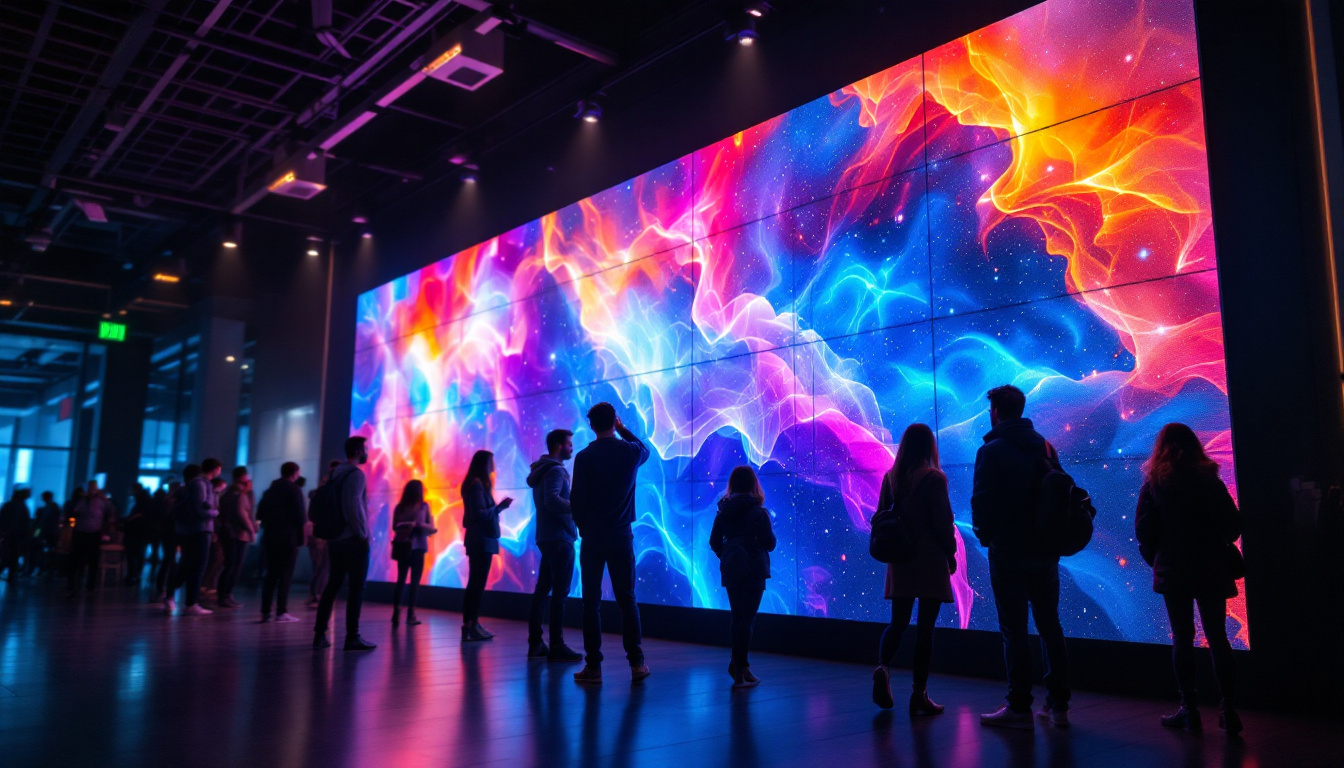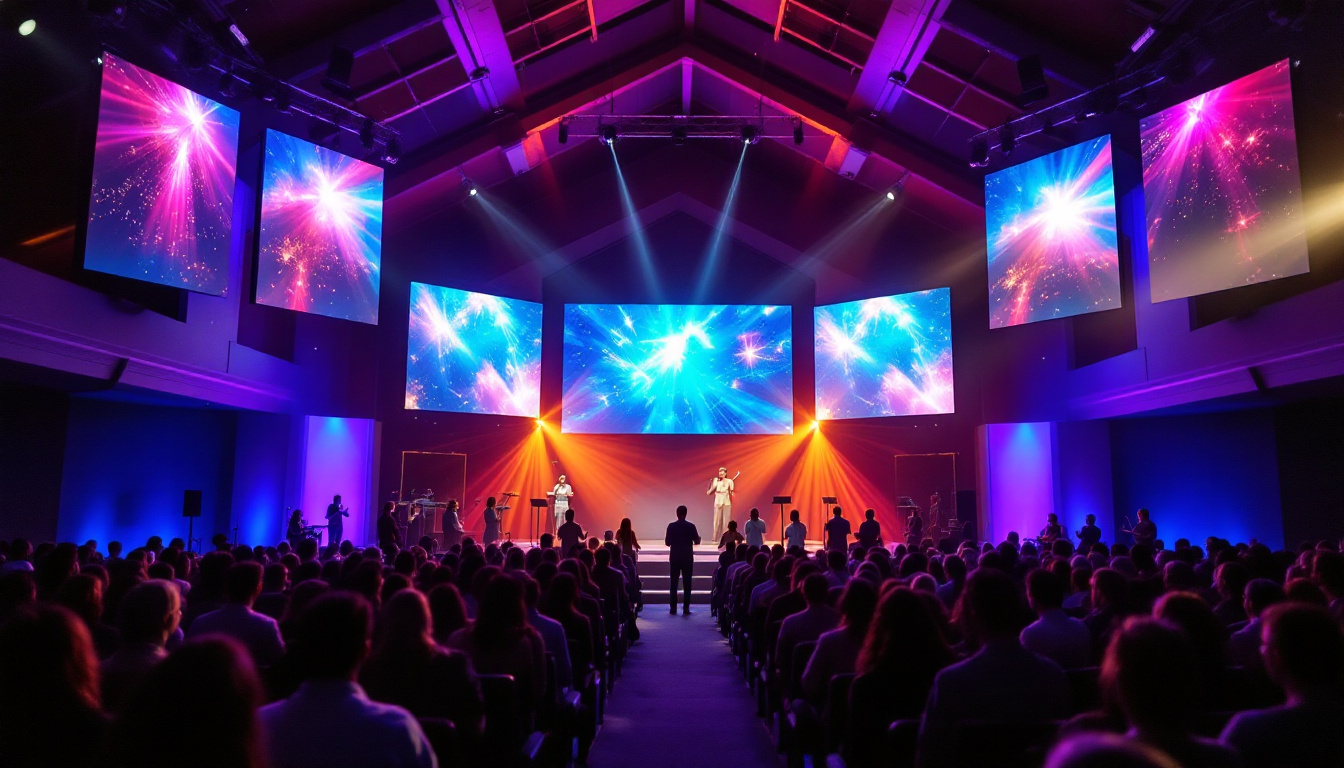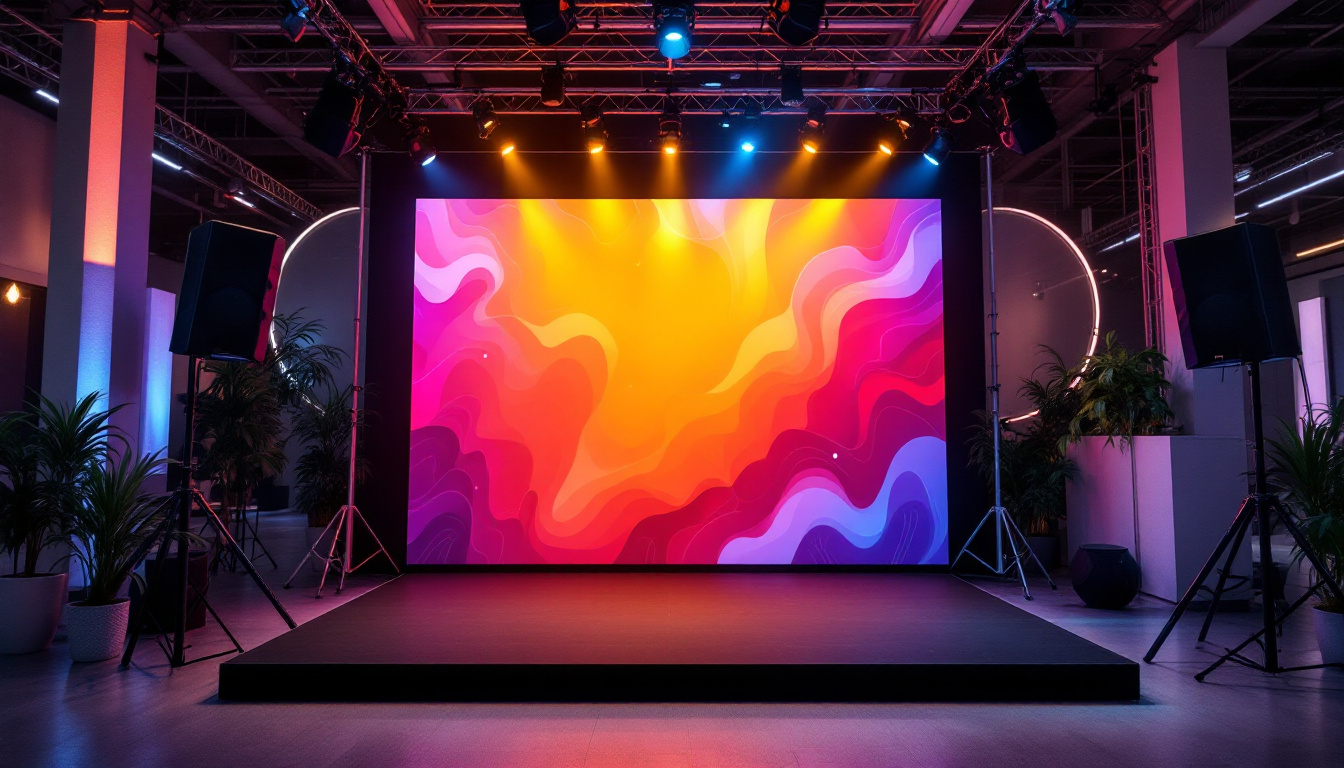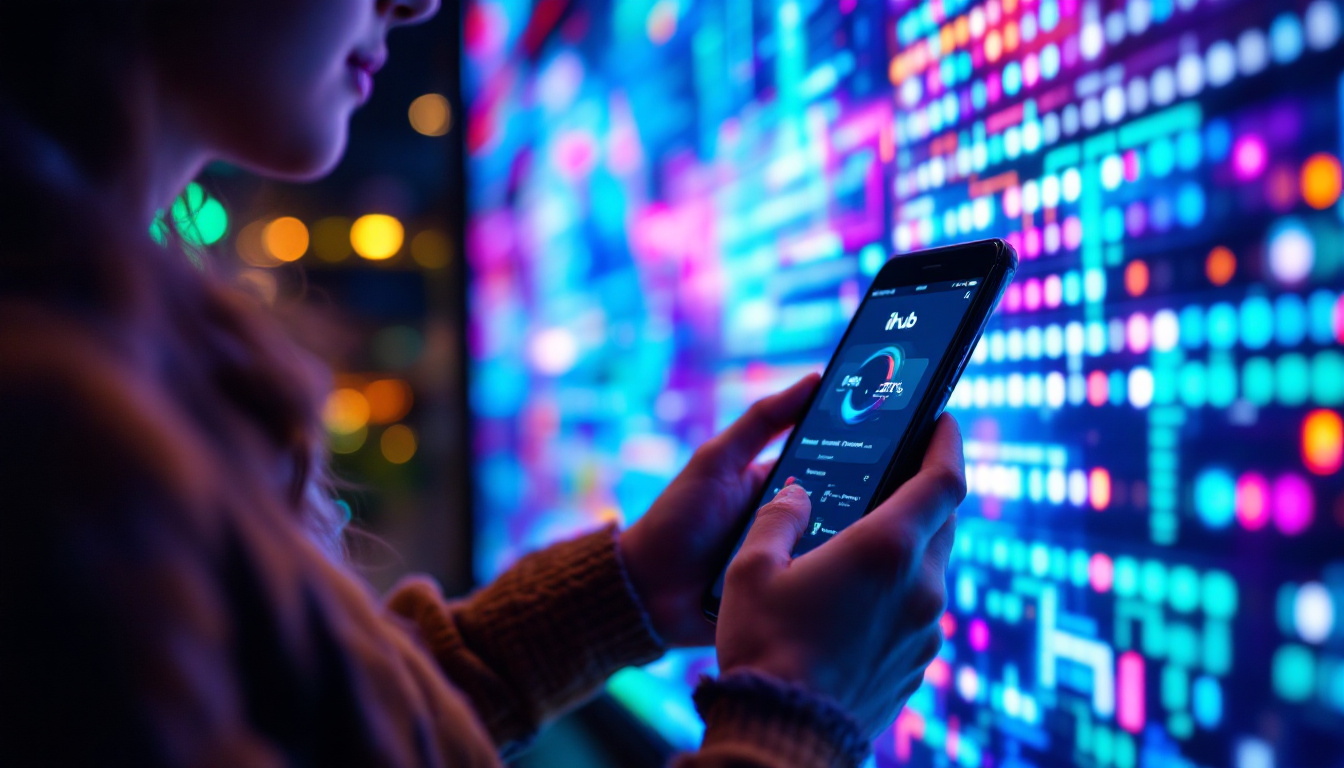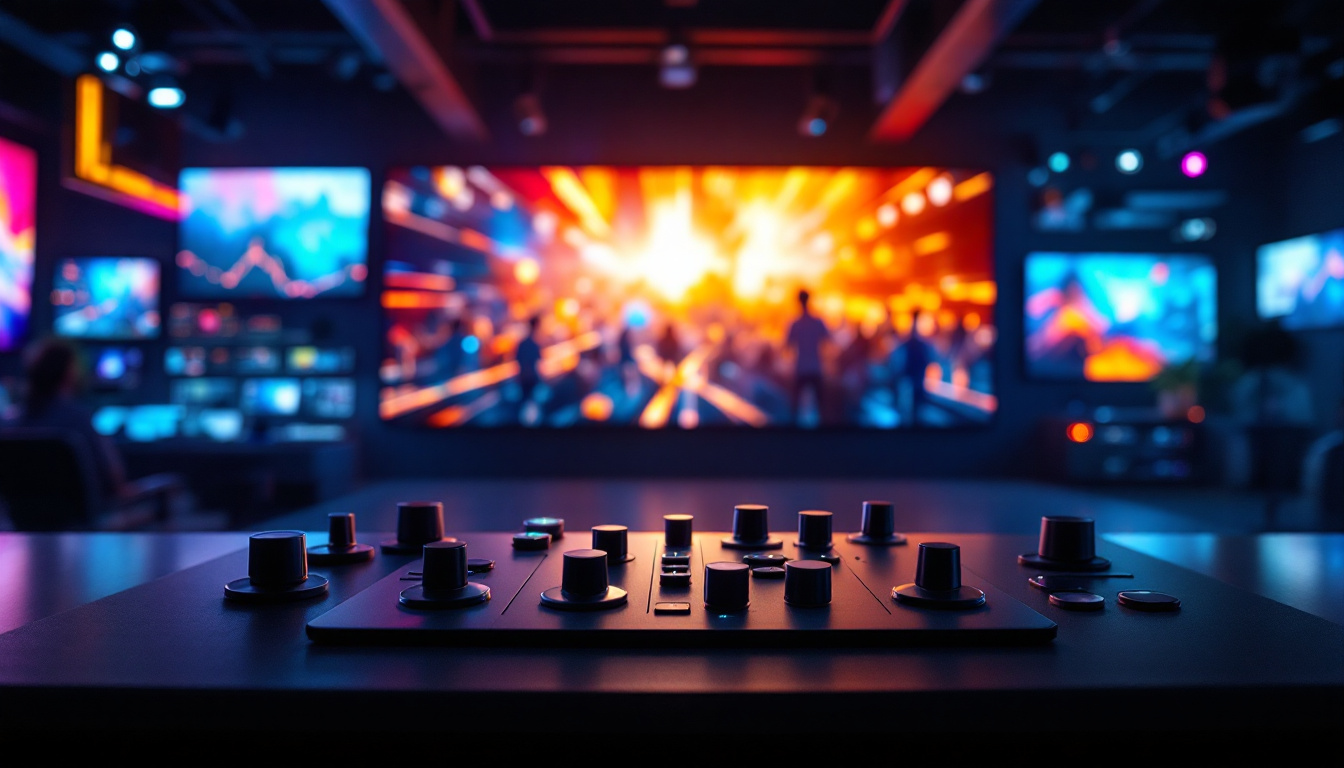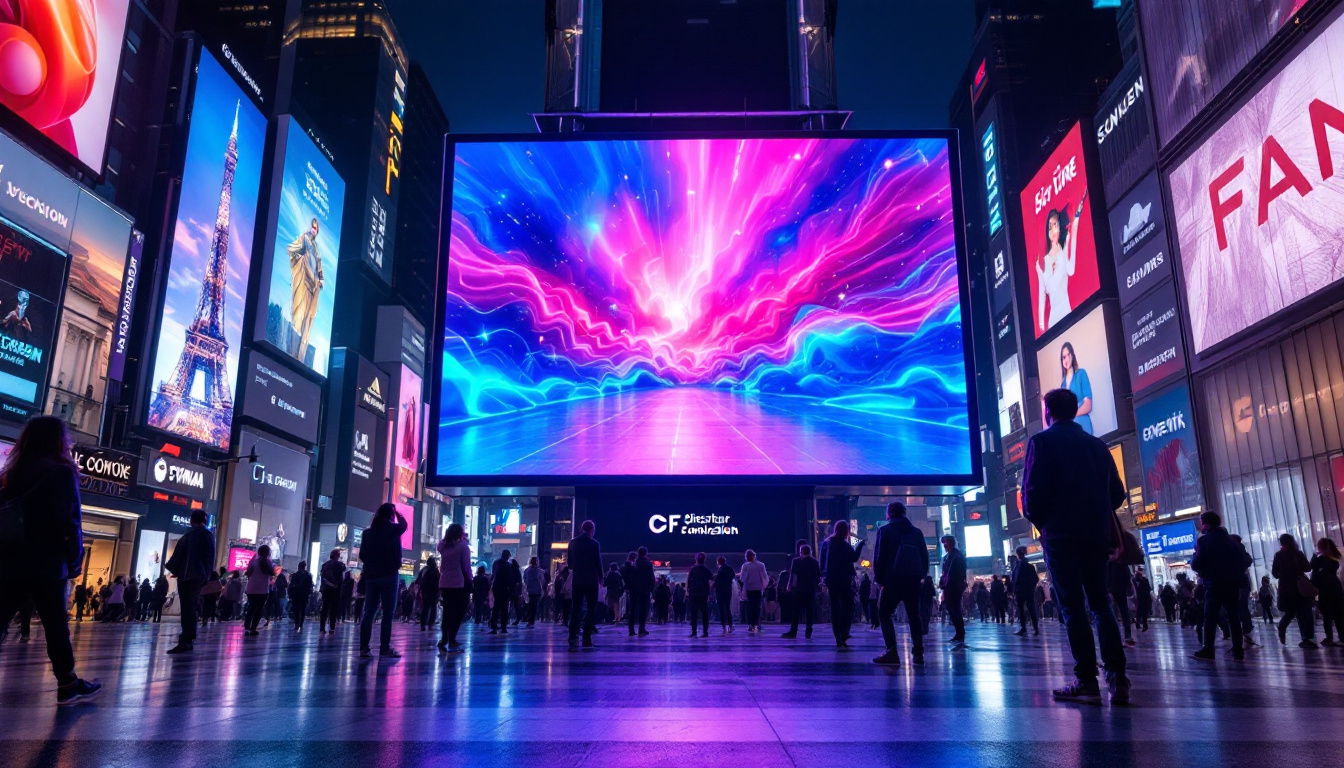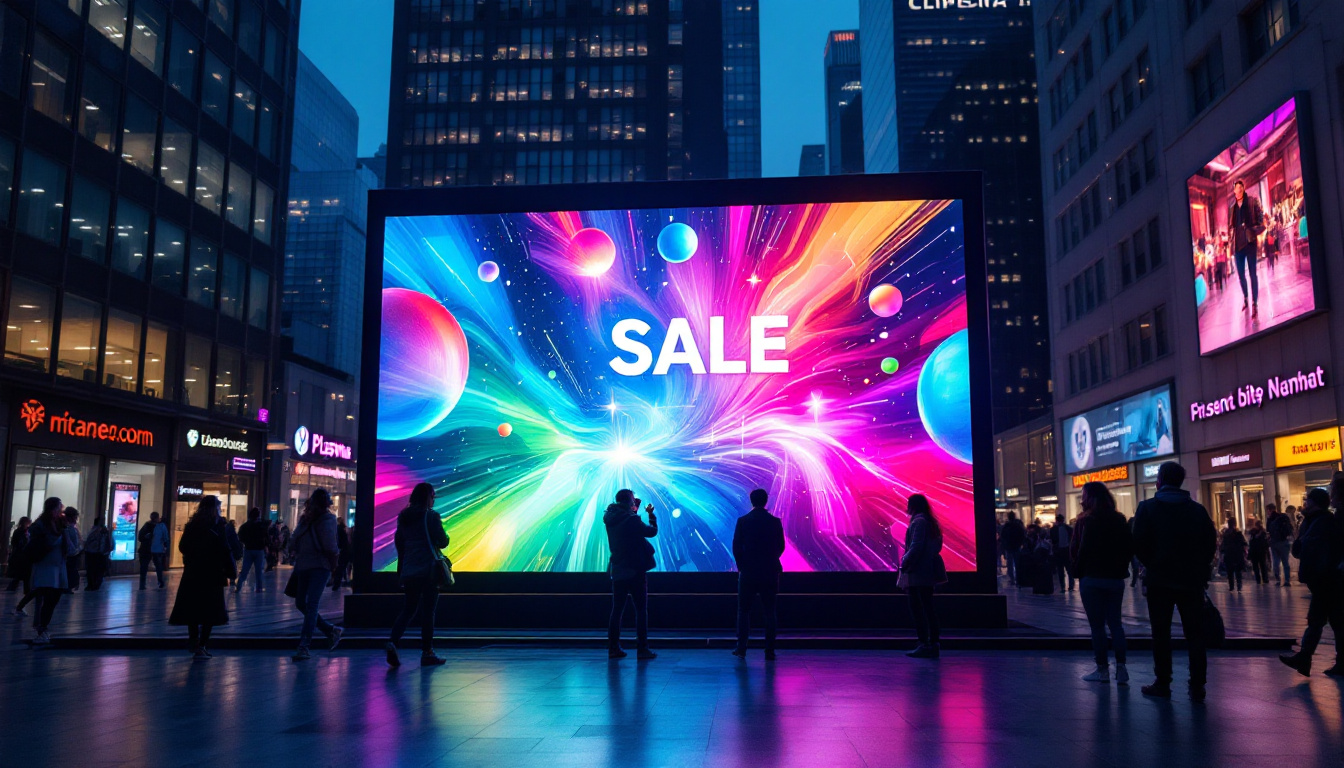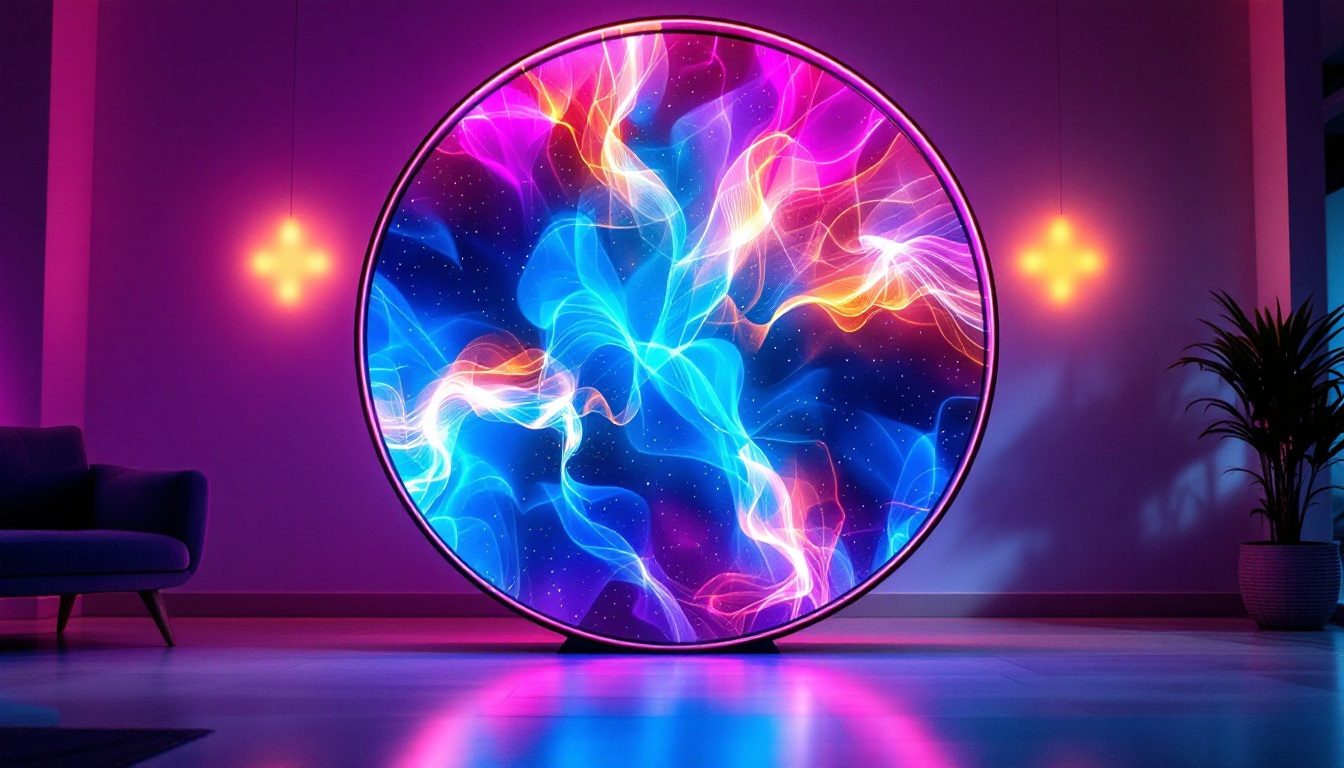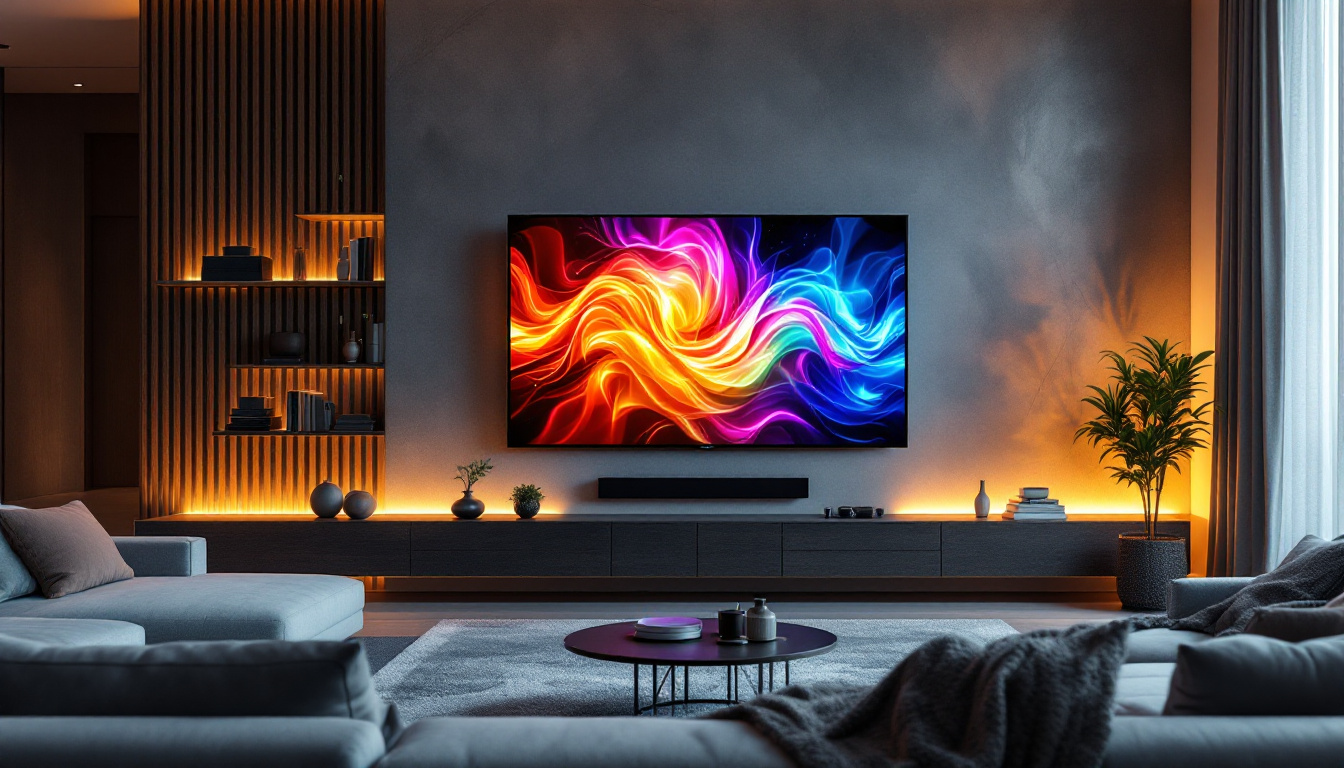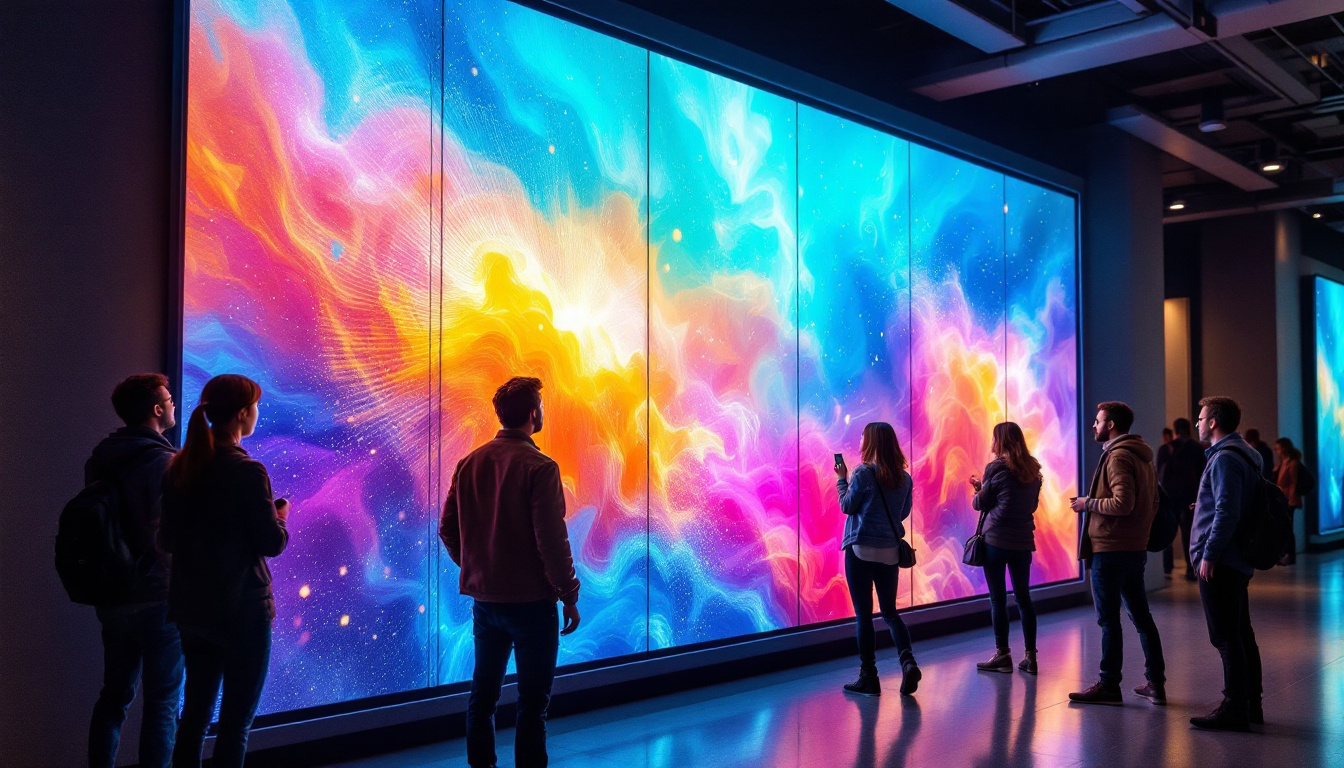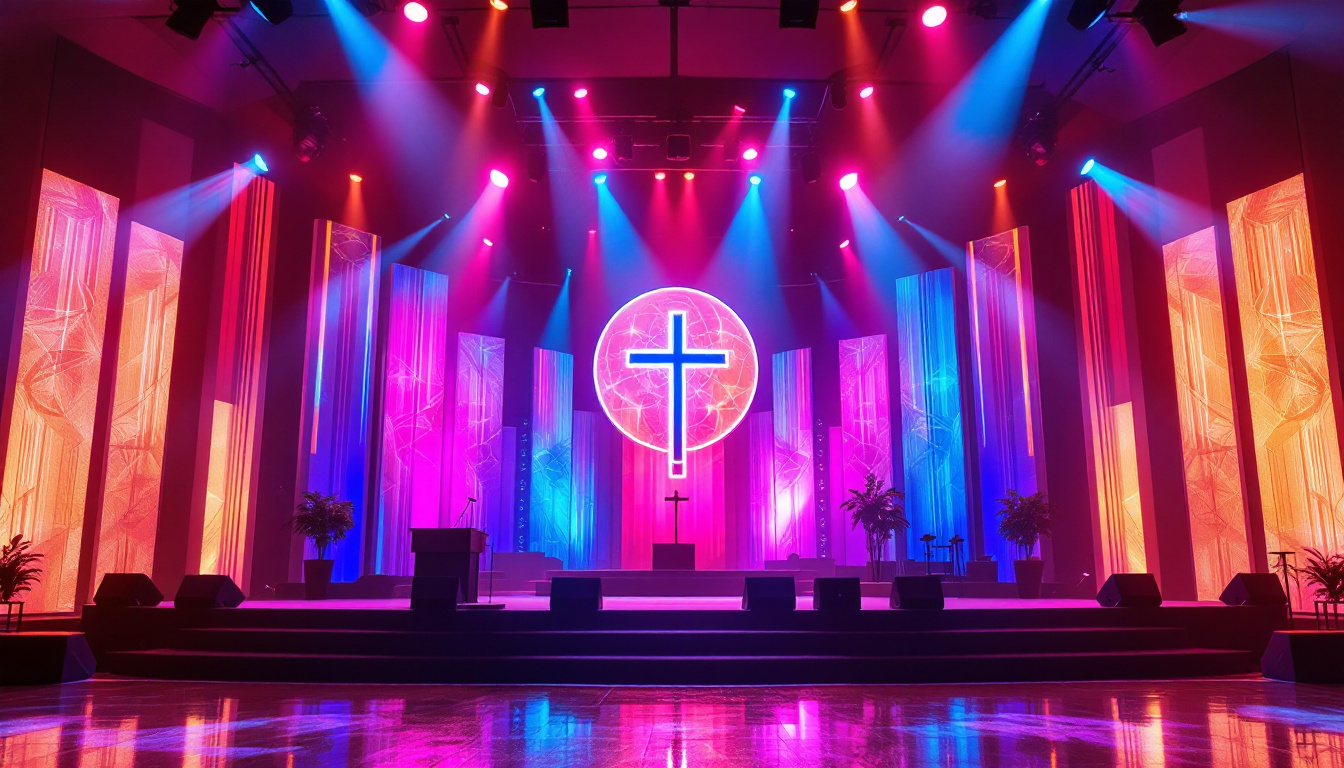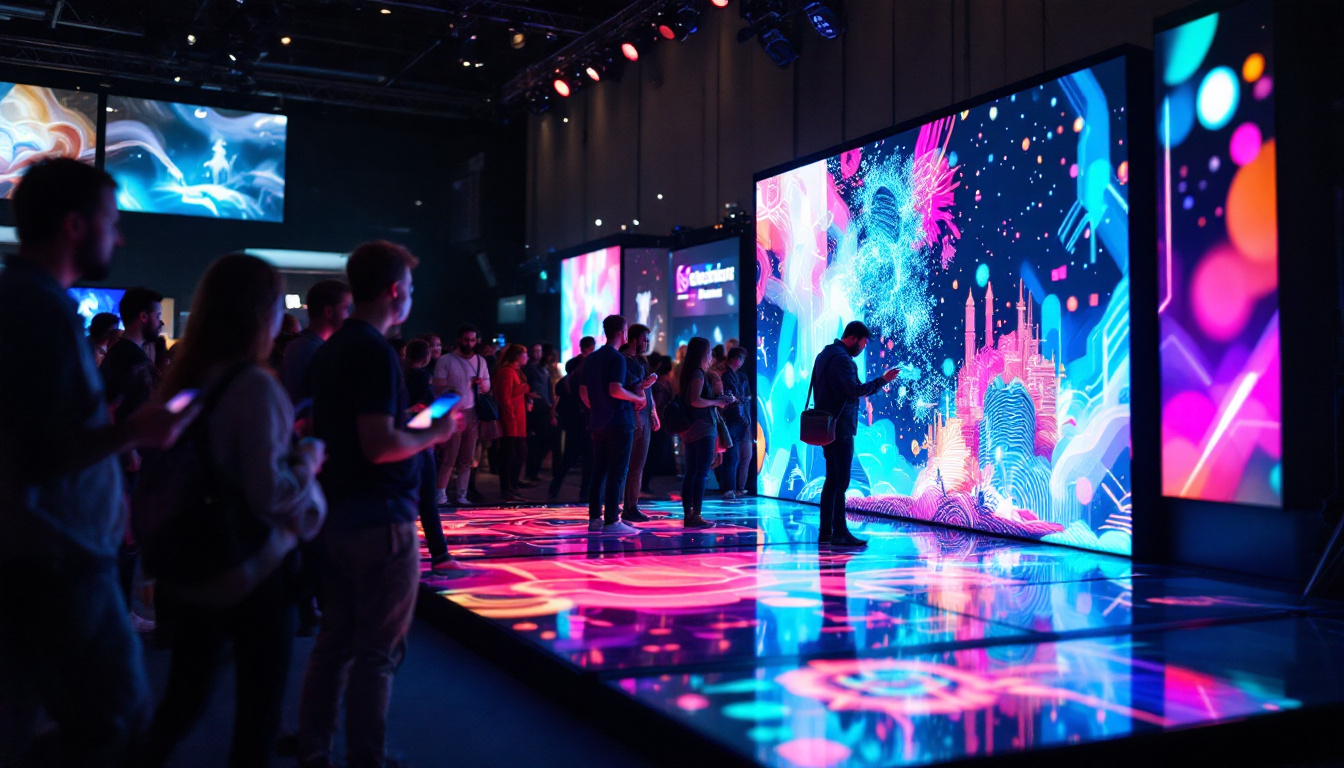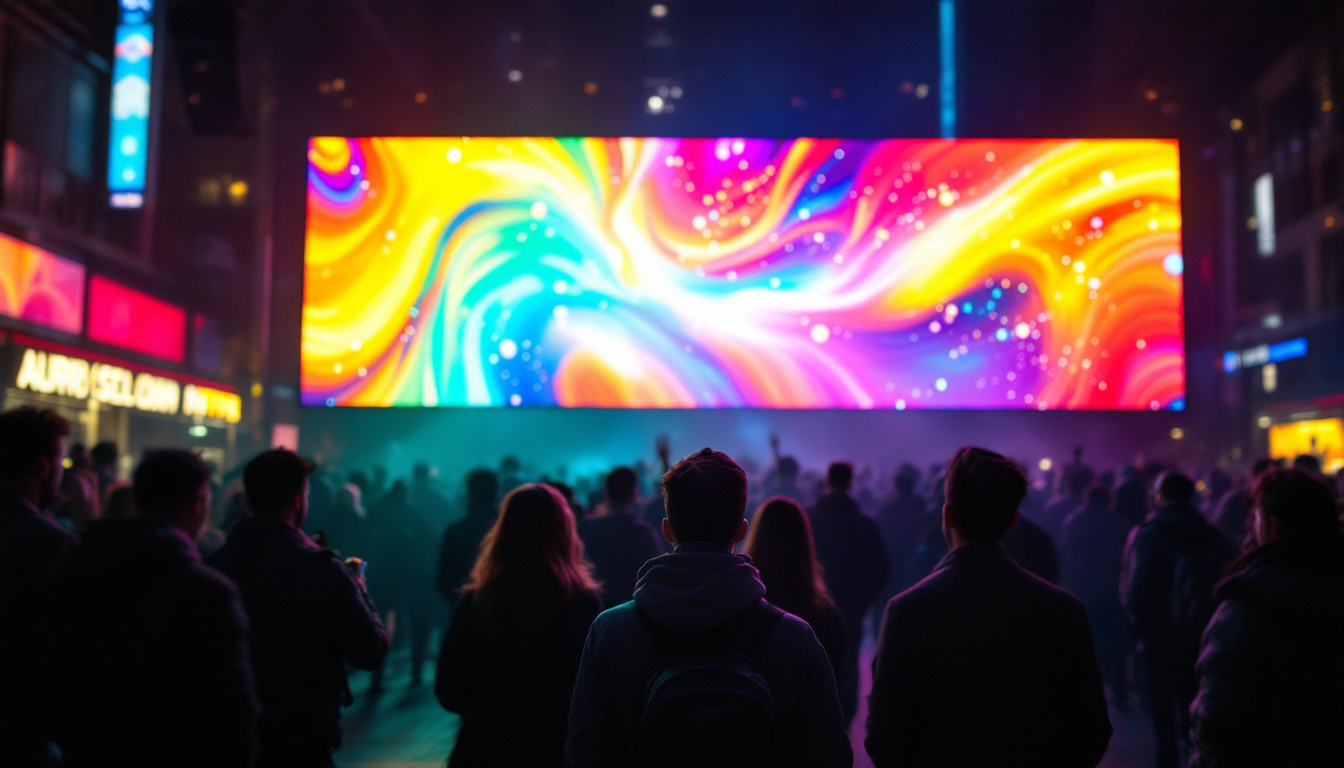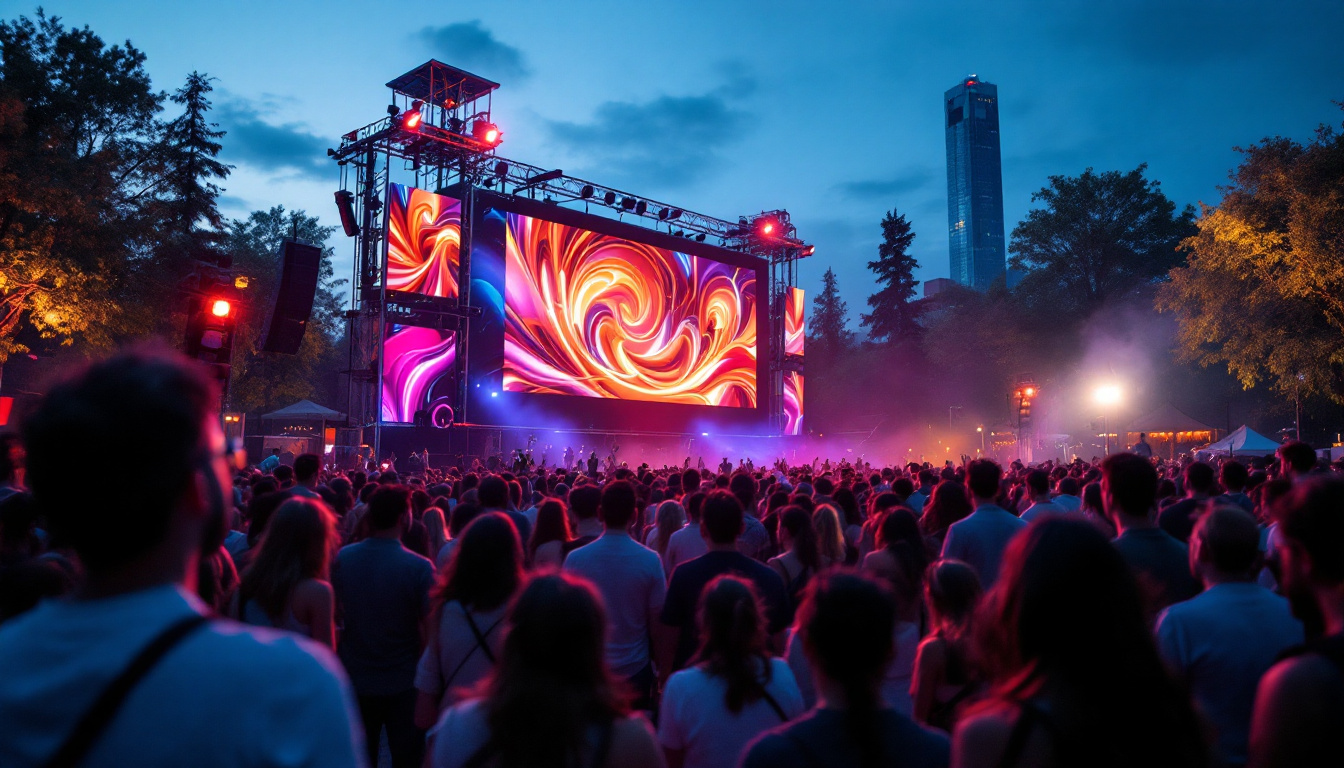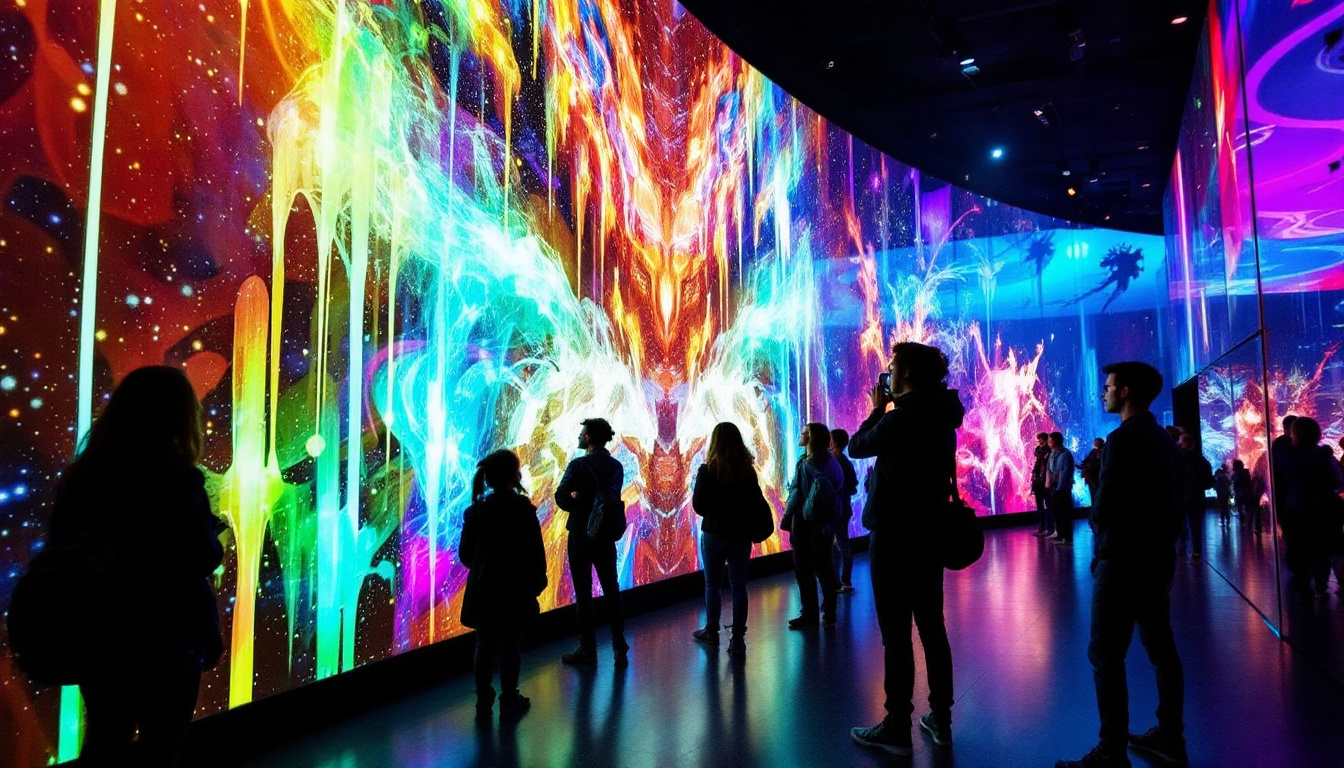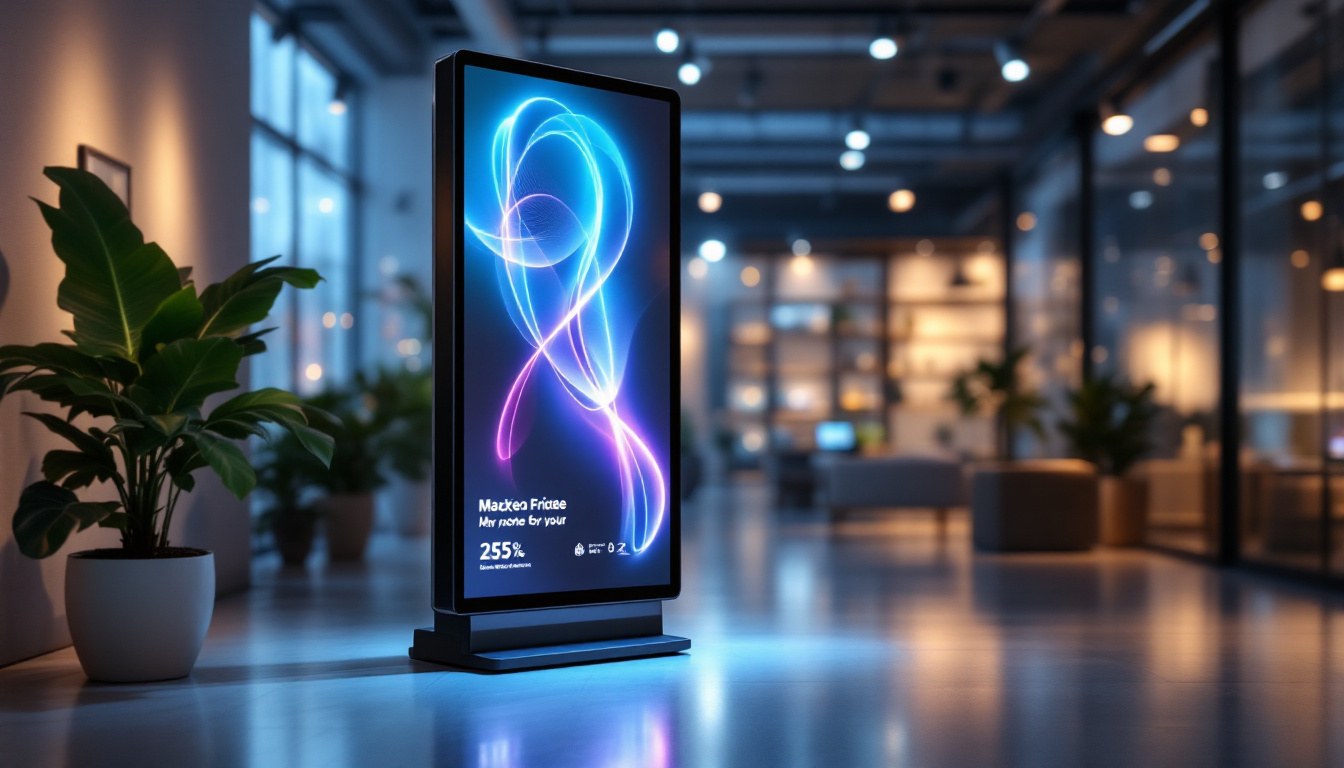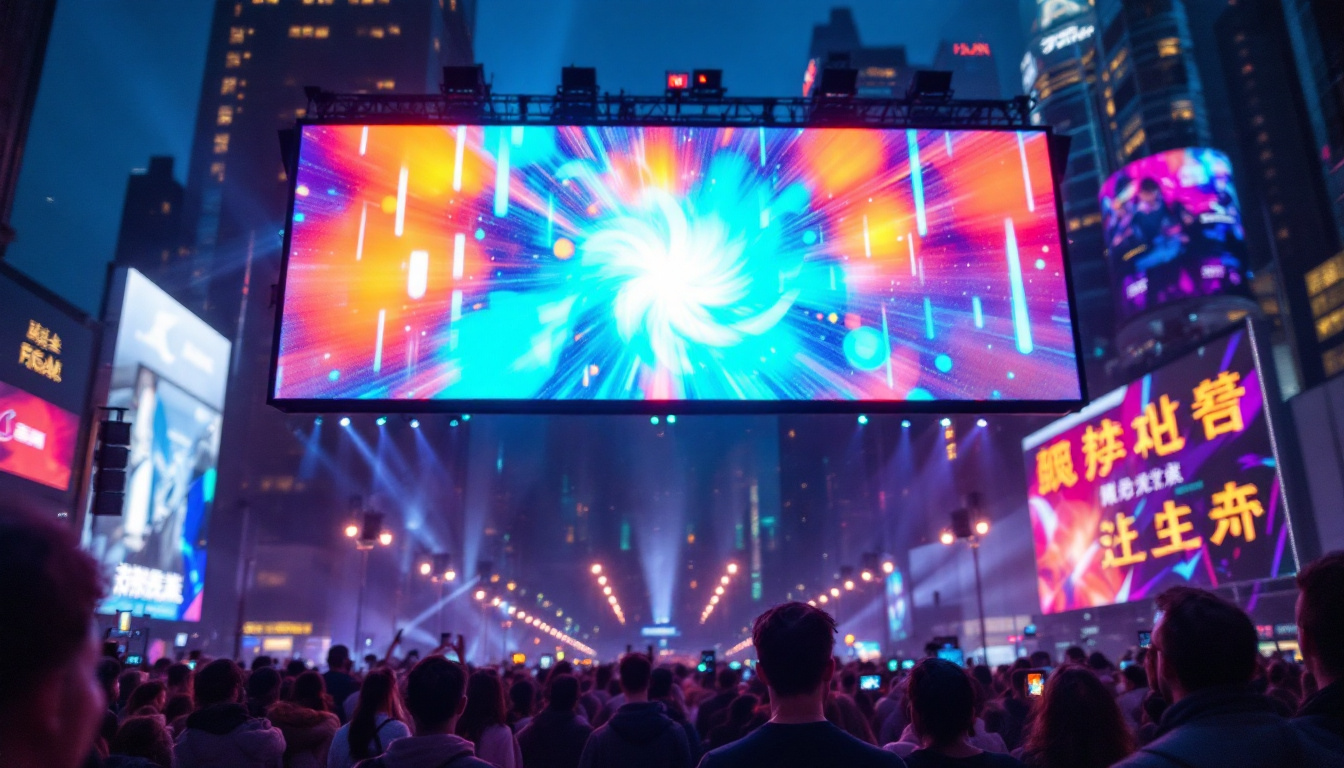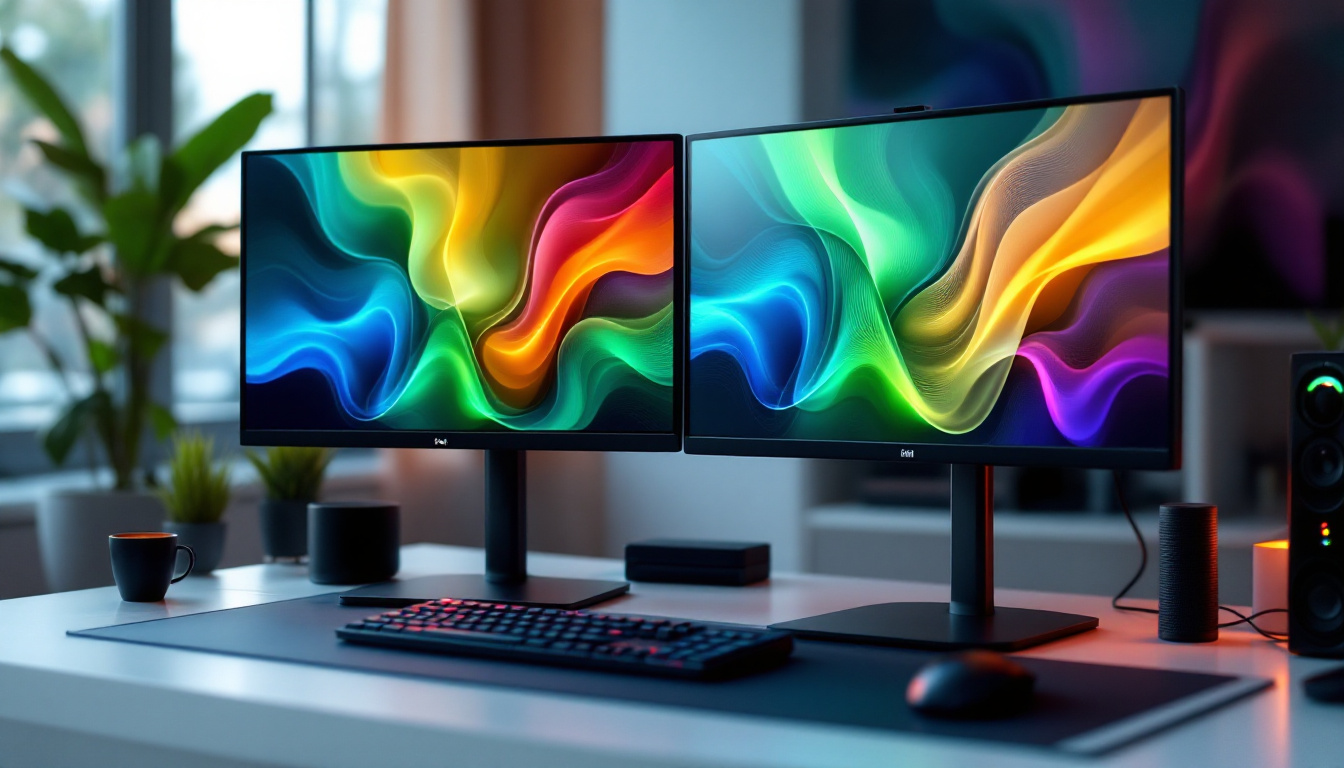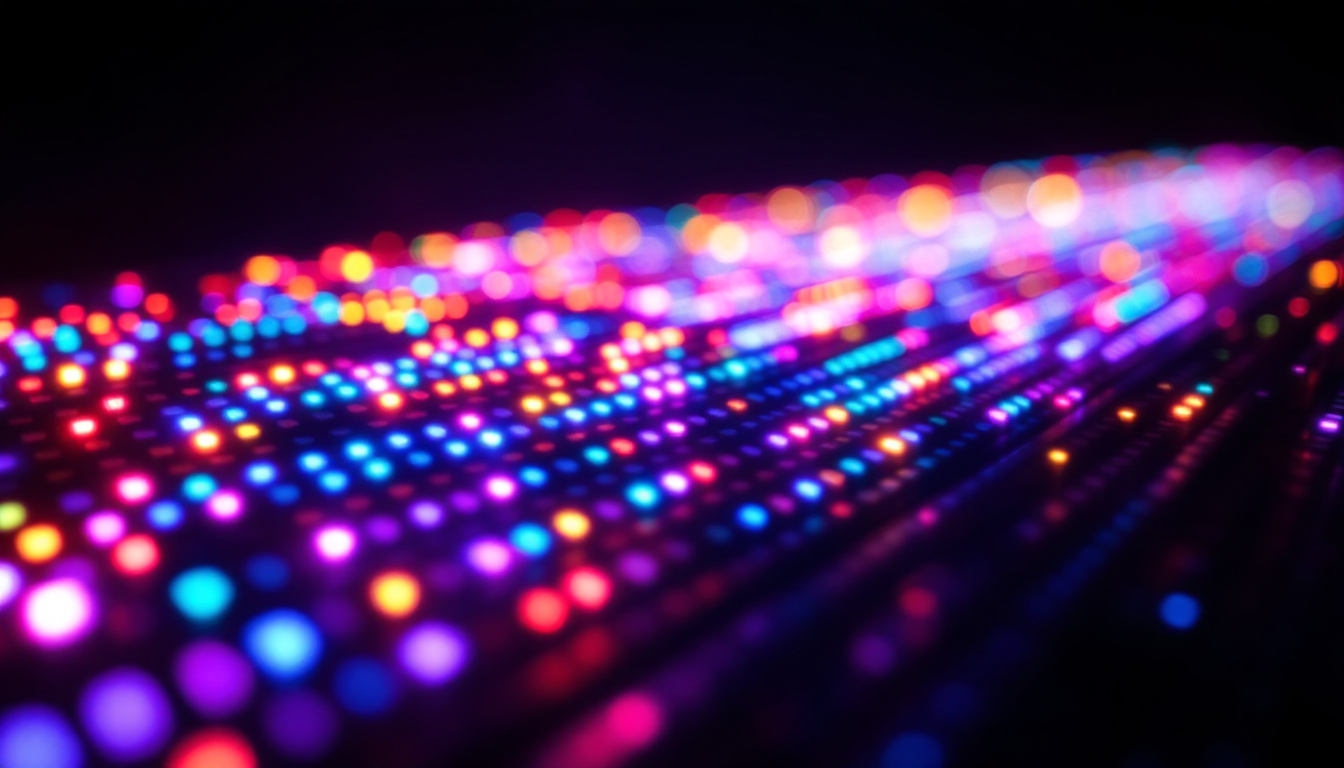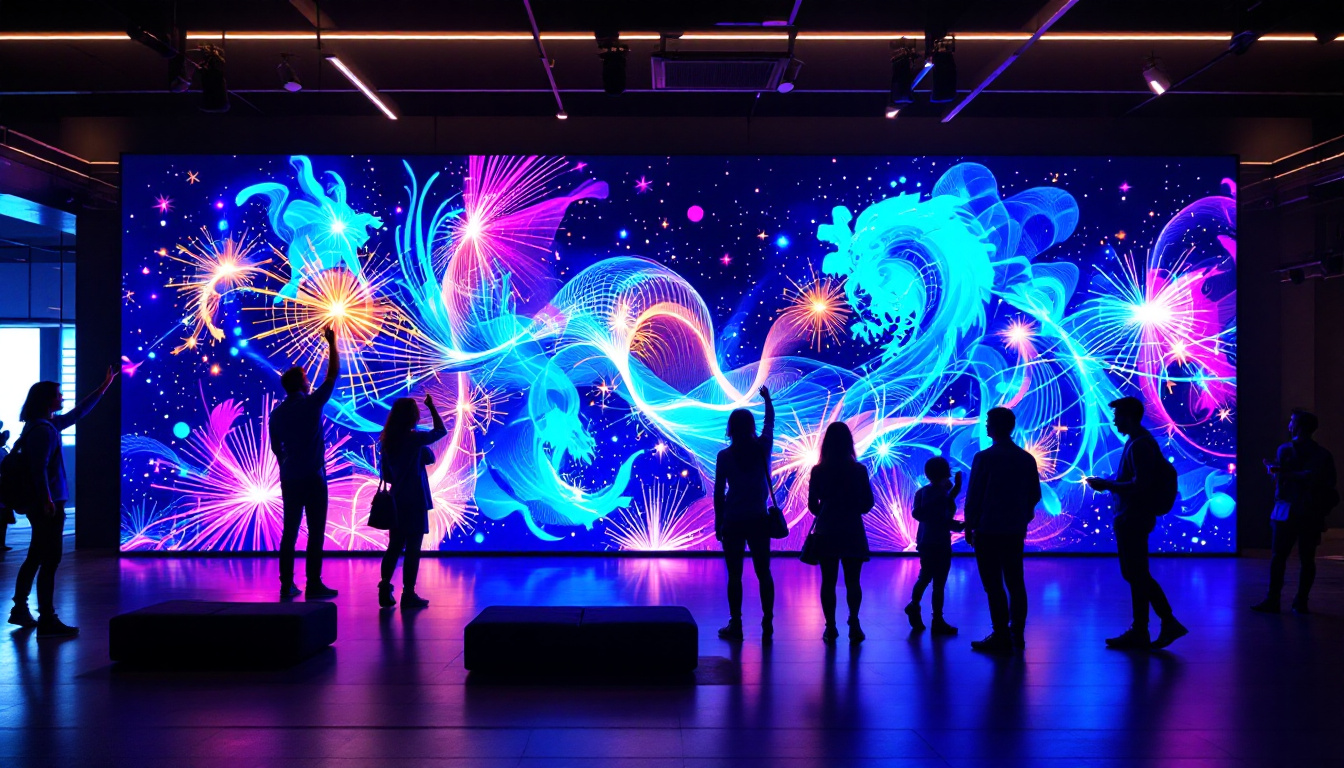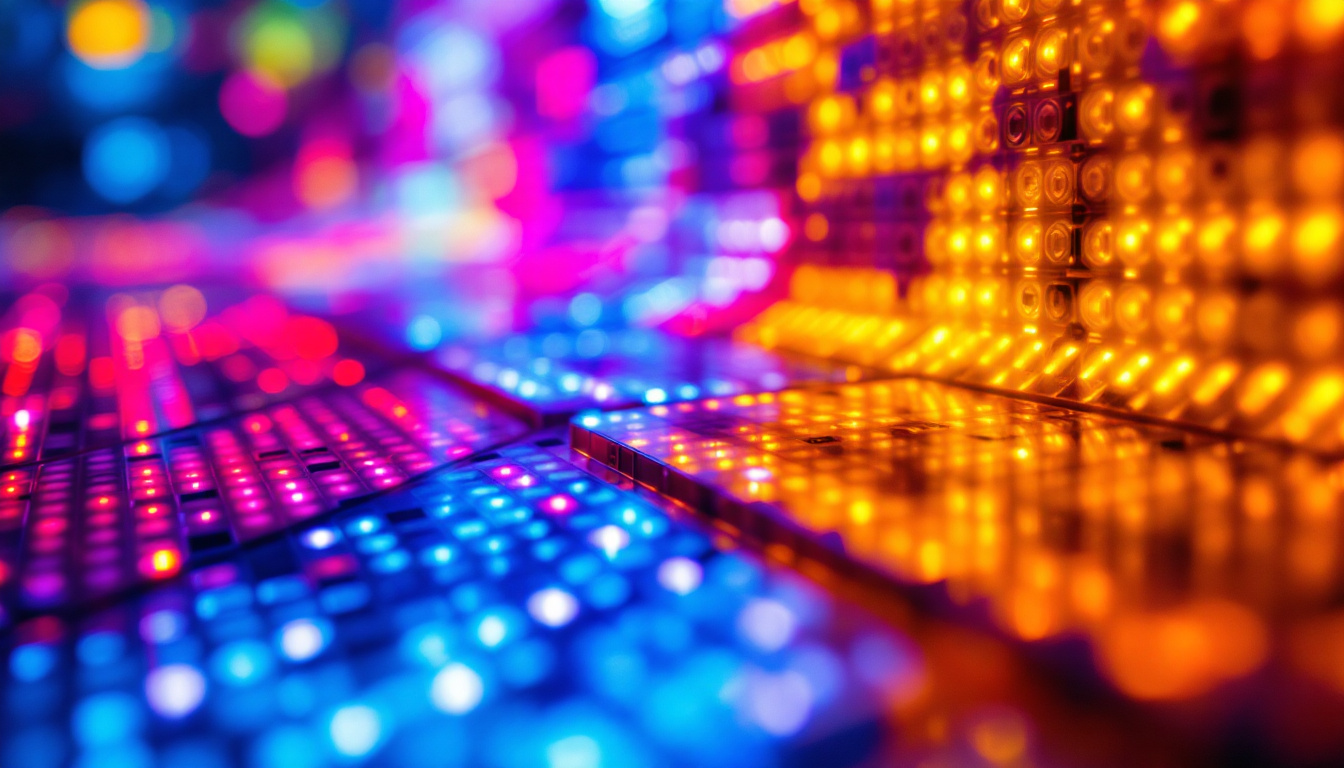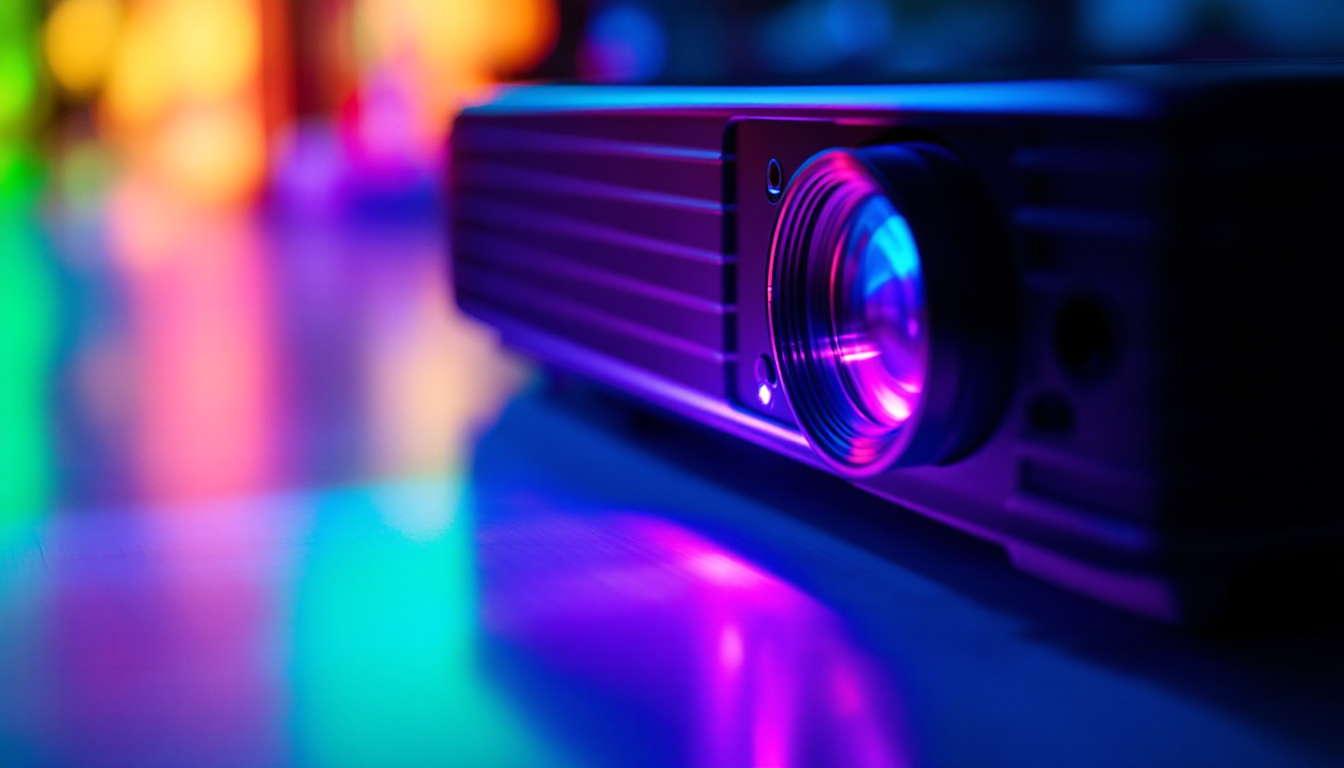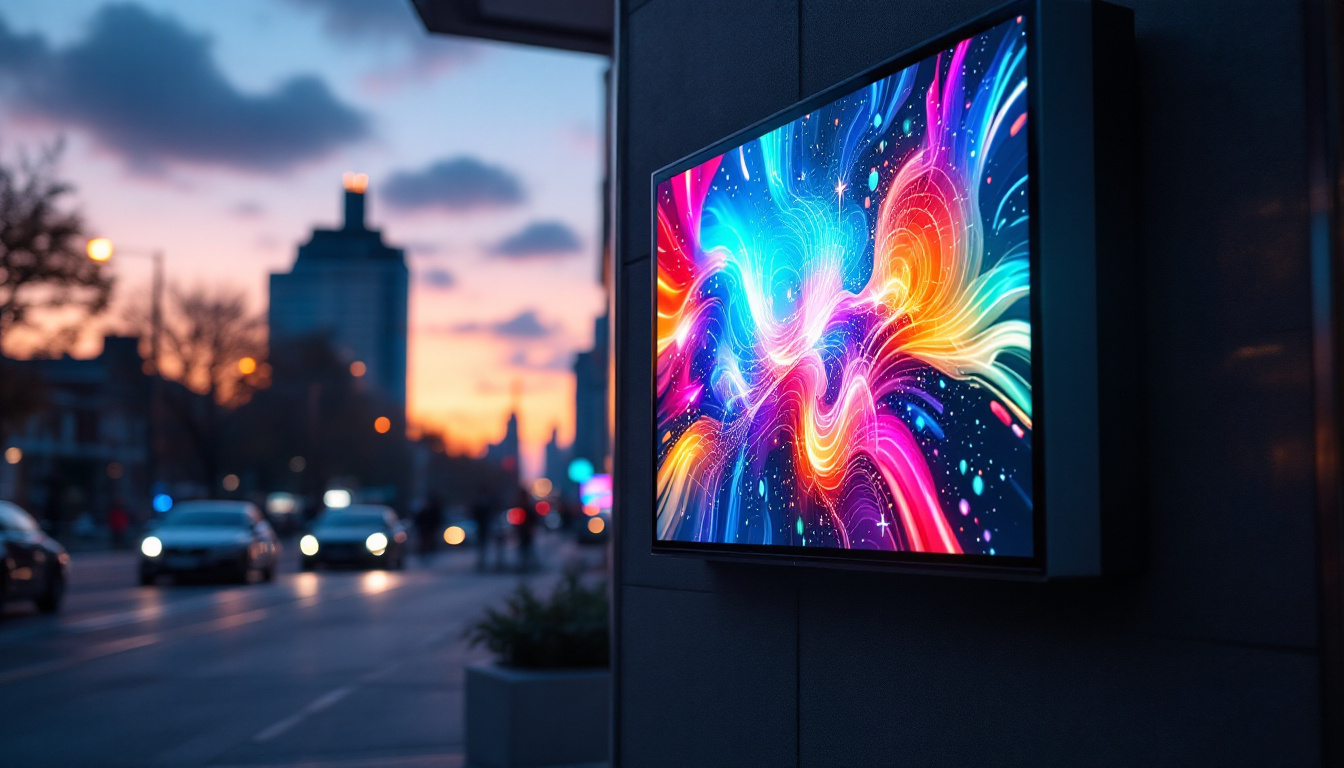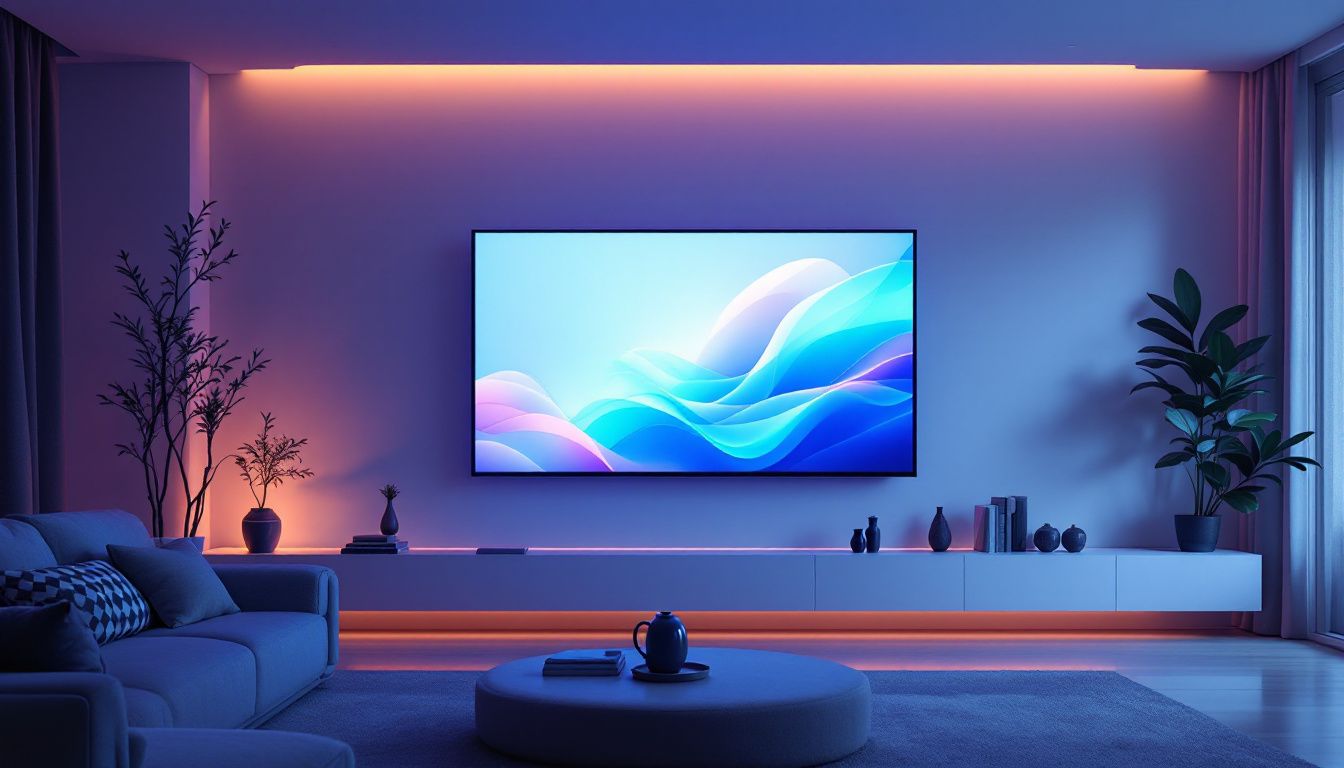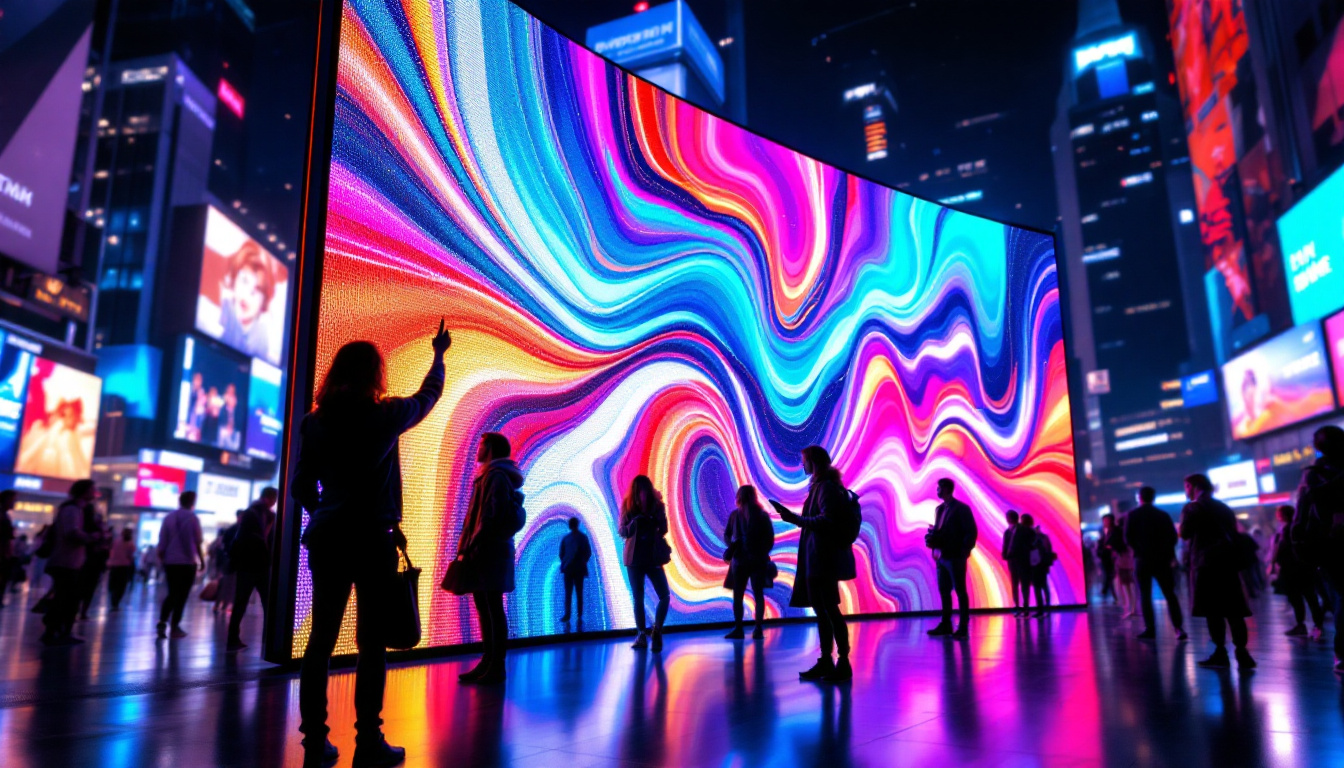In today’s digital age, the demand for high-quality visual displays has surged, particularly in commercial environments. One of the most prominent solutions for delivering stunning visuals is the LED video display wall. This technology has transformed the way businesses communicate, engage, and entertain their audiences. This article delves into the intricacies of LED display walls, exploring their components, benefits, applications, and future trends.
Understanding LED Display Walls
LED display walls are large-scale video screens made up of multiple LED panels that work together to create a cohesive visual experience. These walls can vary in size and resolution, making them suitable for a range of applications, from advertising to live events. The technology behind LED displays has evolved significantly over the years, leading to improved image quality, brightness, and energy efficiency. Today, they are a staple in arenas, concert venues, and even retail spaces, where captivating visuals can enhance the audience’s experience and engagement.
What is an LED Display?
LED, or Light Emitting Diode, is a semiconductor device that emits light when an electric current passes through it. In the context of display technology, LED panels consist of numerous tiny diodes that work together to produce images. The combination of these diodes allows for vibrant colors and sharp contrasts, making LED displays ideal for both indoor and outdoor use. The advancements in LED technology have also led to the development of flexible displays, which can be curved or shaped to fit unique spaces, further expanding their application possibilities.
Modern LED displays can be categorized into two main types: direct view and backlit. Direct view LED displays utilize individual LEDs to create images, while backlit displays use LEDs to illuminate an LCD panel. Direct view displays are more common in video walls due to their superior brightness and color accuracy. Additionally, the pixel pitch—the distance between the center of one LED to the center of the next—plays a crucial role in determining the display’s resolution and viewing distance, with smaller pixel pitches offering higher resolutions suitable for close-up viewing.
Components of an LED Video Wall
An LED video wall consists of several key components that work together to deliver high-quality visuals. Understanding these components is essential for anyone considering this technology for their business or event. Each element plays a vital role in ensuring that the display operates smoothly and efficiently, providing an immersive experience for viewers.
- LED Panels: The building blocks of the video wall, each panel contains a matrix of LEDs that emit light to create images. These panels come in various resolutions and brightness levels, allowing for customization based on the environment and intended use.
- Controller: This device manages the input signals and distributes them across the panels, ensuring that the entire wall displays a unified image. Advanced controllers can also enable features such as video scaling and multi-source input, enhancing the versatility of the display.
- Mounting Structure: A sturdy frame or structure is necessary to support the weight of the panels and maintain alignment. Proper installation is critical, as misalignment can lead to visual artifacts that detract from the overall experience.
- Power Supply: LED panels require a reliable power source to function correctly, and the power supply must be capable of handling the total load of the display wall. Energy-efficient power supplies can significantly reduce operational costs over time.
- Cooling System: To prevent overheating, especially in larger installations, a cooling system may be necessary to maintain optimal performance. This can include passive cooling through ventilation or active cooling systems that use fans or liquid cooling methods.
In addition to these components, the software used to manage content on LED display walls is equally important. Content management systems (CMS) allow users to schedule and control what is displayed in real-time, providing flexibility for dynamic advertising or event updates. The integration of interactive elements, such as touch capabilities or audience engagement features, is also becoming increasingly popular, making LED display walls not just a medium for passive viewing but an interactive experience that captivates audiences and enhances communication.
Benefits of LED Display Walls
LED display walls offer numerous advantages over traditional display technologies, making them an attractive option for various applications. Here are some key benefits:
Exceptional Image Quality
One of the standout features of LED display walls is their exceptional image quality. With high resolution and vibrant colors, these displays can captivate audiences and convey messages effectively. The ability to produce deep blacks and bright whites enhances contrast, making images pop and ensuring clarity even in brightly lit environments.
Energy Efficiency
LED technology is known for its energy efficiency compared to other display types, such as LCD or projection systems. LED panels consume less power while delivering superior brightness, which can lead to significant cost savings over time. This efficiency is particularly beneficial for businesses looking to reduce their energy footprint and operational costs.
Versatility and Scalability
LED video walls are incredibly versatile, capable of being customized to fit various spaces and applications. Whether it’s a small retail store or a large stadium, these displays can be tailored to meet specific requirements. Additionally, they are scalable, meaning that businesses can start with a smaller installation and expand as needed without compromising performance.
Applications of LED Display Walls
The versatility of LED display walls allows them to be used in a wide range of applications across different industries. Here are some notable areas where LED video walls are making an impact:
Advertising and Marketing
In the realm of advertising, LED display walls have become a powerful tool for brands looking to capture consumer attention. Their ability to display dynamic content, such as videos and animations, makes them ideal for high-traffic areas like shopping malls, airports, and city centers. Brands can create eye-catching campaigns that engage viewers and drive sales.
Events and Entertainment
From concerts to corporate events, LED video walls play a crucial role in enhancing the audience experience. They can be used to display live feeds, graphics, and promotional content, ensuring that everyone in attendance has a clear view of the action. Their flexibility allows for creative staging and immersive environments that elevate the overall event atmosphere.
Control Rooms and Command Centers
In sectors such as security, transportation, and emergency response, LED display walls are essential for monitoring and decision-making. Control rooms utilize these displays to visualize data from multiple sources, providing operators with real-time information. The ability to customize layouts and switch between different feeds enhances situational awareness and response times.
Challenges and Considerations
While LED display walls offer numerous benefits, there are also challenges and considerations that potential users should be aware of. Understanding these factors can help in making informed decisions.
Initial Investment
One of the primary challenges associated with LED display walls is the initial investment required for installation. High-quality LED panels can be expensive, and the total cost may include additional components such as controllers, mounting structures, and installation services. However, businesses should consider the long-term benefits and potential return on investment when evaluating costs.
Maintenance and Upkeep
Like any technology, LED display walls require regular maintenance to ensure optimal performance. This includes cleaning the panels, checking connections, and addressing any technical issues that may arise. While many manufacturers provide warranties and support, businesses should factor in ongoing maintenance costs when budgeting for an LED display wall.
Content Management
Creating and managing content for an LED display wall can be complex, especially for businesses that wish to update their messaging frequently. effective content management systems are essential for scheduling and displaying content seamlessly. Organizations may need to invest in training or hire specialists to maximize the potential of their video wall.
Future Trends in LED Display Technology
The LED display industry is continually evolving, with new technologies and trends emerging that promise to enhance the capabilities of video walls. Here are some future trends to watch:
Higher Resolutions
As technology advances, the demand for higher resolution displays is on the rise. Future LED video walls are expected to feature even finer pixel pitches, allowing for greater detail and clarity. This trend will enable businesses to create more immersive experiences and cater to audiences seeking high-definition content.
Integration with Smart Technologies
With the rise of smart technologies and the Internet of Things (IoT), LED display walls are likely to become more integrated with other systems. This could include real-time data feeds, interactive elements, and enhanced connectivity with mobile devices. Such integration will allow for more dynamic and engaging content that responds to audience behavior.
Sustainability Initiatives
As environmental concerns continue to grow, the LED display industry is focusing on sustainability. Future developments may include eco-friendly materials, energy-efficient designs, and recycling programs for old displays. Businesses that prioritize sustainability will not only reduce their environmental impact but also appeal to increasingly conscious consumers.
Conclusion
LED display walls have revolutionized the way businesses communicate and engage with their audiences. With their exceptional image quality, energy efficiency, and versatility, these displays are becoming an essential tool across various industries. While challenges such as initial investment and maintenance exist, the long-term benefits often outweigh these concerns.
As technology continues to evolve, LED display walls will undoubtedly become even more advanced, offering new opportunities for creativity and engagement. For businesses looking to enhance their visual communication strategies, investing in an LED video display wall may be a step toward a brighter, more dynamic future.
Discover LumenMatrix LED Display Solutions
Ready to elevate your visual communication and captivate your audience with unparalleled clarity and vibrancy? Explore LumenMatrix’s comprehensive range of LED display solutions, from Indoor and Outdoor LED Walls to innovative Custom and Transparent Displays. Whether for advertising, live events, or dynamic installations, LumenMatrix is at the forefront of transforming spaces with cutting-edge technology. Check out LumenMatrix LED Display Solutions today and take the first step towards a more engaging and visually stunning future.

